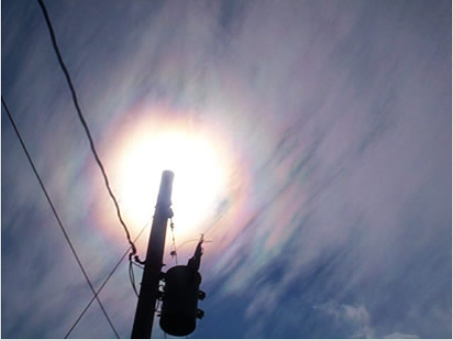Iridescent Clouds
Iridescent Clouds: A Captivating Display of Atmospheric Optics
Have you ever gazed up at the sky and witnessed a breathtaking display of vibrant colors dancing across the clouds? These enchanting phenomena are known as iridescent clouds, and they never fail to captivate our imagination. In this article, we will delve deeper into the mesmerizing world of iridescence and explore the science behind these celestial spectacles.
What are Iridescent Clouds?
Iridescent clouds, also referred to as rainbow clouds or polar stratospheric clouds, are a remarkable optical phenomenon that occurs when sunlight interacts with tiny water droplets or ice crystals in the Earth's atmosphere. Unlike the soft pastel hues of a traditional rainbow, iridescent clouds showcase intense and vivid colors, ranging from deep blues and purples to fiery oranges and reds.
The Science Behind Iridescence
The key to understanding iridescence lies in the process of diffraction. When sunlight passes through the minuscule water droplets or ice crystals suspended in the atmosphere, it bends or scatters, resulting in the separation of light into its component colors. This phenomenon is similar to what occurs when white light passes through a prism, creating a spectrum of colors.
Factors Influencing Iridescent Clouds
Several factors contribute to the formation and intensity of iridescent clouds. These include:
-
Droplet or Crystal Size: The size of the water droplets or ice crystals plays a crucial role in determining the colors observed in iridescence. Smaller particles tend to produce more vibrant and saturated hues.
-
Sun's Position: The angle at which sunlight interacts with the cloud particles affects the visibility and intensity of iridescence. The best time to witness these captivating displays is often during sunrise or sunset when the sun is lower on the horizon.
-
Atmospheric Conditions: Specific atmospheric conditions, such as high humidity or the presence of certain pollutants, can enhance the formation of iridescent clouds. These conditions create an environment conducive to the creation of smaller droplets or crystals, intensifying the iridescence.
Types of Iridescence
Iridescence can manifest in various forms, each with its unique characteristics and mesmerizing beauty. Some notable types of iridescent phenomena include:
-
Cloud Coronas: These circular rings of vibrant colors encircling the sun or moon are a common form of iridescence. They occur when sunlight interacts with cloud particles and undergoes diffraction.
-
Iridescent Cloud Bands: These are elongated strips or bands of iridescent colors that appear parallel to the horizon. They often occur in stratocumulus or altocumulus clouds and create a striking visual spectacle.
-
Nacreous Clouds: Also known as polar stratospheric clouds, nacreous clouds form at high altitudes in polar regions. These clouds exhibit vivid iridescence due to the presence of ice crystals and unique atmospheric conditions.
Capturing the Beauty of Iridescent Clouds
Photographers and sky enthusiasts alike are often drawn to the captivating beauty of iridescent clouds. To capture these ephemeral moments, it is essential to adjust camera settings and composition accordingly. Some tips for photographing iridescence include:
- Use a polarizing filter to enhance the colors and reduce glare.
- Experiment with different exposure settings to achieve the desired effect.
- Include interesting foreground elements to add depth and context to your photographs.
- Capture the changing colors and patterns by taking multiple shots at different intervals.
The Magic of Iridescent Clouds
Iridescent clouds are a testament to the astonishing wonders of our atmosphere. Their ethereal beauty reminds us of the intricate interplay between light and matter, creating moments of pure enchantment in our skies. So, the next time you find yourself gazing up at the heavens, keep an eye out for these mesmerizing displays of iridescence, and let their magic transport you to a world of awe and wonder.


Iridescence and Coronas 2
Prolific atmospheric optics observer Michael Ellestad (site) watched the vivid iridescence in the top picture develop into a corona on May 31, 2002.
Images ©2002 Michael Ellestad and reproduced with permission.
Note: this article has been automatically converted from the old site and may not appear as intended. You can find the original article here.
Reference Atmospheric Optics
If you use any of the definitions, information, or data presented on Atmospheric Optics, please copy the link or reference below to properly credit us as the reference source. Thank you!
-
<a href="https://atoptics.co.uk/blog/iridescent-clouds-8/">Iridescent Clouds</a>
-
"Iridescent Clouds". Atmospheric Optics. Accessed on November 26, 2024. https://atoptics.co.uk/blog/iridescent-clouds-8/.
-
"Iridescent Clouds". Atmospheric Optics, https://atoptics.co.uk/blog/iridescent-clouds-8/. Accessed 26 November, 2024
-
Iridescent Clouds. Atmospheric Optics. Retrieved from https://atoptics.co.uk/blog/iridescent-clouds-8/.